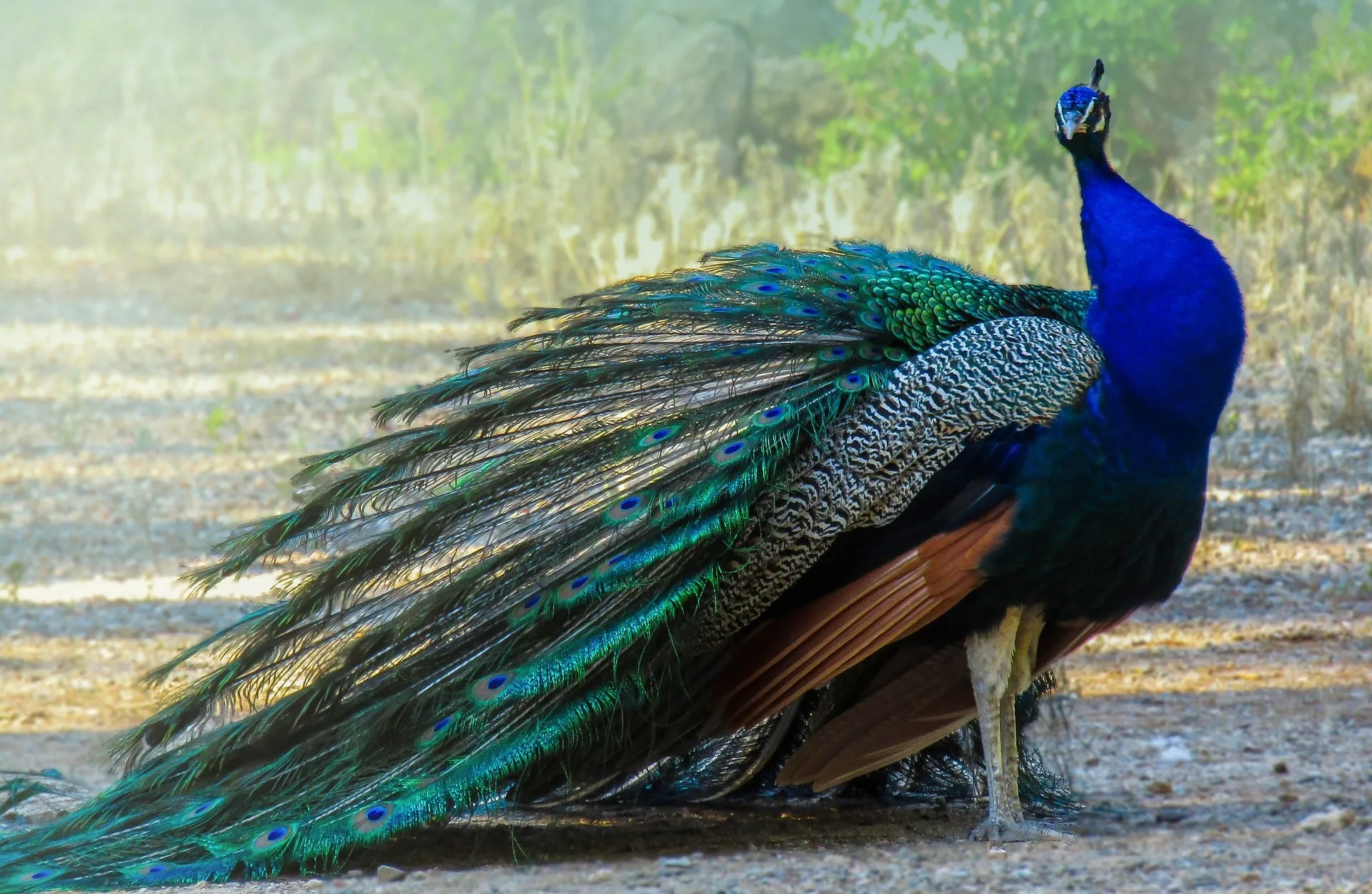Beauty is more than skin deep
Among birds it is almost always the male who is the most beautiful and showy, and there’s good reason for this.

Article and images by Dr Julie O'Connor, senior conservation partnerships officer
Among birds it is almost always the male who is the most beautiful and showy, and there’s good reason for this. When a male bird turns on the charm to attract a female it can be a costly exercise. Whether he builds an impressive bower; performs a complex dance routine; or carries around some spectacular plumage, it is all very energetically expensive. For the male, it can be worthwhile to spend precious energy on his looks because if he looks impressive enough, the female might choose him, which would allow him to pass his genes on to the next generation.
The female, on the other hand, needs to conserve all her energy because producing offspring is very costly. If she is going to invest all that energy, she needs to be pretty sure that the mate she chooses will give her offspring the best chance of survival. And, here’s where the beauty comes in. All the effort put in by the male is intended to let prospective females know that he is the fittest and healthiest male around.
To see how this works let’s have a look at the Indian peacock Pava cristatus. The iridescent “peacock blue” head and neck feathers and the spectacular tail feathers make him irresistible to peahens. Researchers have confirmed that the brightness of eye spots on the peacock’s tail and the number of eye spots (130+) is positively correlated with his mating success. But there’s more to it than mating success for the male.
There is a good reason why peahens like pretty boys. Researchers found interesting evidence that all that dazzling male beauty is an accurate reflection of his health status, and females are probably well aware of that. From the female’s perspective, the male’s good health status has undeniable genetic benefits. Researchers found that peacocks that had bigger and brighter eyespots produced chicks that weighed more at 3 months of age and would be more likely to be alive after two years than the progeny of fathers with fewer eyespots. So important is this health signalling that the female may choose to forego mating altogether if she considers the male to be less than adequate.
Just occasionally, peacocks will get so caught up in the moment that you don’t even have to be a peahen to be the object of his affection. If you’re brown and have feathers that might be enough.
It’s not always looking good that will get you a female in the animal kingdom. Sometimes the beauty is in the voice. In almost all frog species, it is the male who does the calling to attract females. And while a cacophony of serenading frogs may not be music to our ears, it is the equivalent of a moonlight serenade for a female frog searching for a mate. The call of the male frog not only advertises his presence, but his big strong voice is telling her he is the best frog to mate with.
If those honest indicators of his suitability as a potential mate aren’t enough, the males of some species are also not above indulging in some dirty tricks. During his PhD, well known ecologist, Dr Graeme Gillespie observed some male frogs sitting atop other males and clasping their vocal sacs to prevent them from calling. Apparently all is fair in love and war in the animal kingdom.
References
- ABC Radio Darwin, Croaking season: How a ‘cool puddle’ and ‘sexy call’ helps male frogs court their mate, 21 September 2016
- Graves GR. Head color and caruncles of sympatric Cathartes vultures (Aves: Cathartidae) in Guyana and their possible function in intra-and interspecific signaling. Proceedings of the Biological Society of Washington. 2016 Apr 2;129 (1):66-75
- Loyau A, Gomez D, Moureau B, Théry M, Hart NS, Jalme MS, Bennett AT, Sorci G. Iridescent structurally based coloration of eyespots correlates with mating success in the peacock. Behavioral Ecology. 2007 Nov 1;18(6):1123-31
- Loyau A, Saint Jalme M, Cagniant C, Sorci G. Multiple sexual advertisements honestly reflect health status in peacocks (Pavo cristatus). Behavioral ecology and Sociobiology. 2005 Oct 1;58(6):552-7.
